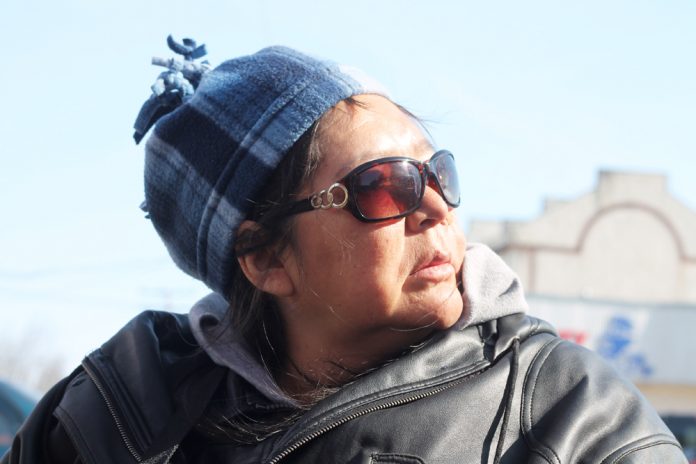Defence argues Leslie Black’s risk can be managed, and a dangerous offender designation would not be appropriate
Patrick Lavallee doesn’t think Leslie Black should ever see the outside of a prison.
Black, 31, was convicted of attempted murder after sexually assaulting Marlene Bird and setting her on fire, an attack that left Bird legless and partially blind.
Lavallee is one of Marlene Bird’s friends. He pushes her around town when her power scooter breaks and assists her in her day-to-day life.
“I think (Black) should be gone until Marlene gets her legs back,” Lavallee said outside provincial court June 30.
“And not stick legs – her real ones.”
He says life is hard for Bird.
“She tells me the best time is in her sleep, because in her sleep she’s always walking.”
Still, Lavallee said, Bird is full of amazing stories, and hasn’t given up on life.
“She wants to live,” he said. “She thanks God everyday that she survived.”
Inside the courthouse, lawyers were submitting their final arguments to Judge Stanley Loewen in Black’s sentencing.
Crown attorney Jeff Lubyk is calling for a dangerous offender designation for Black and an indeterminate sentence that could result in his imprisonment for the rest of his life.
The defence, on the other hand, is calling for a lenghty, but not indeterminate, sentence.
Brent Little argued that the dangerous offender distinction doesn’t apply in this case, as it has not been established that Black has a history of violent acts, or that his risk isn’t manageable.
Both lawyers submitted their written briefs – each dozens of pages long.
Lubyk gave few oral arguments, preferring to let his written submissions speak for themselves.
Little was more vocal.
He reminded the judge to make his ruling based on the facts of law, and not the court of public opinion.
“If he was tried in the court of public opinion, Mr. Black would already be done,” Little said.
He laid out his argument – a dangerous offender designation is based on a pattern of violence, and a high risk that the person would reoffend. Citing the testimony of a psychiatrist and psychologist, and the lack of a violent history, Little argued the crown did not prove either the pattern of violence or that the risk of Black reoffending couldn’t be managed.
He did say the defence agrees a lengthy sentence is necessary. He just didn’t think it should be indeterminate.
“No one can say what happened wasn’t brutal. It was,” Little said. “One brutal offence doesn’t mean another brutal offence will occur. There is no data one will lead to another.”
He also argued Black’s risk to the public is manageable through treatment. He pointed out that Black had already started treatment, and had earned his GED while behind bars.
Little submitted that Black serve 10-15 years in prison, followed by 10 years of a long-term supervision order (LTSO), preferably not served in the prairie area.
An LTSO begins at the completion of time served behind bars, and applies to offenders who do not meet the criteria of a dangerous offender designation.
“While they may pose a risk to re-offend, the evidence is able to satisfy the court that the offender can effectively be controlled in the community under supervision after release.” Correctional Services Canada wrote in a 2008 document.
Breaching a term of an LTSO is an offence punishable by up to ten years in prison.
Little believes 10-15 years plus 10 of supervision is more than sufficient.
“That’s a long sentence. That’s a lot of renunciation (of violence) and deterrence,” he said, adding that LTSOs do work.
He told the judge it’s a matter of proportionality. He doesn’t think Black should be in prison until he’s 80.
“This isn’t a treatment-adverse person,” he said. “Don’t throw away the key on him.”
Loewen will return with his verdict on Aug. 30.


